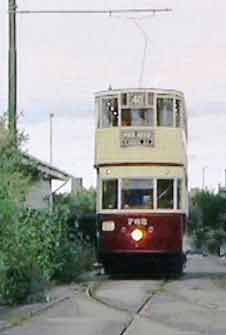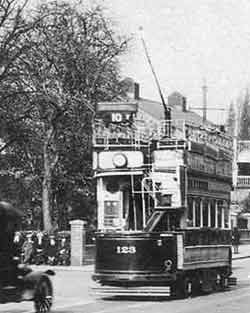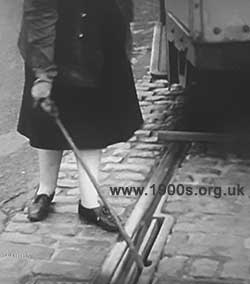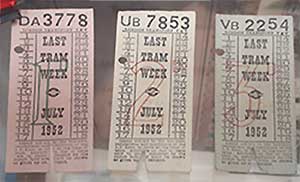
The travel experience on London trams in the past

There was no shortage of public road transport in early 20th Century London. There were buses, trams and trolleybuses, some still horse-drawn as a left-over from the previous century and some motorised. This page is about trams: what they were, how to recognise them and what it was like to travel on them. It gives personal experience set against historical background.
____
Extracted from the memoirs of the webmaster's mother(1906-2002) and edited by the webmaster with further research and firsthand contributions from others
Distinguishing features of trams
Trams were a form of public road transport, but they differed from buses in the following ways.
- Trams did not travel on normal wheels. They ran on rails set into the roads, and their wheels were flanged to keep them on track, somewhat reminiscent of trains on railway lines.
- Trams ran on electricity, so were always connected flexibly to a single and very obvious, thick overhead cable mounted on masts of some sort. We always used the term 'boom' for the rod-like connection between the tram and the cable, but I haven't been able to confirm that this was a generally used term. It looked fairly long and rigid although the connection points did allow smooth movement . You can get the idea from the top image.
As it was expensive to lay the tracks, trams ran on relatively few routes.
The general appearance of trams was much like that of old buses, and they were all open-topped when I was growing up.
Manoeuvrability and safety
Because trams ran on rails, they were not at all manoeuvrable: The driver couldn't steer and other road users had to keep a constant look-out to get out of their way.
Trams were particularly hazardous for cyclists because their wheels could easily get caught in the channels on either side of the rails. Cyclists had to make a point of riding across them rather than along them.

Front of a tram. Note the rails which allow the tram to change direction and the support for the overhead wire. Photo from the effects of Ena Cole.

Back of a tram, c 1910. The pole connecting the overhead wire to the top of the bus is clear in the original but are unfortunately too feint to see in this reduced image, but the rails in the road, the open top and the flanged wheels are clear. Photo from the effects of Ena Cole.
Open top deck
Trams, like buses, had open tops when I was a child. On the early buses page there is a photo of the flaps on the backs of the seats in front that could be pulled over knees when it rained.
Tram conductors
My Aunt Em was one of the many women who was drafted in to work on the trams during World War One, when so many men were away fighting (or dead or injured). She often let us children have a free ride.

A woman conductor alights from the tram to change the points on the rail so that the tram can change direction
The horses who pulled the trams
Double deck trams were usually drawn by two horses, as the photo shows. Single deck ones were usually drawn by a single horse. Horse-drawn trams were expensive to operate due to the required frequent changes of horse as well as stables, feeding, grooms etc.
Darren Kitson
What happened to the London trams? History of London trams and the end of London trams
The tram in the above image belonged to the then North Metropolitan Tramways. This company later became part of Metropolitan Electric Tramways and the former horse tram routes were electrified before becoming part of London Transport at the latter's formation in 1933. With the exception of three tram routes using the Kingsway Subway, all of North London's trams had gone by WWII and were replaced in the main by trolleybuses. London's remaining trams finally bowed out in July 1952, leaving London tram-less until the modern Croydon-based system appeared. During the last week of London's trams, many cars (as trams were called by staff) carried the announcement "Last tram week. On July 5th we say goodbye to London".
Darren Kitson

A one penny, two penny and three penny tram ticket from the last week of the trams, July 1952
If you can add anything to this page or provide a photo, I would be pleased if you would contact me.
Text and images are copyright
sources: early 20th century material
sources: ww2 home front and other material
contact
the webmaster/author/researcher/editor
privacy policy
















